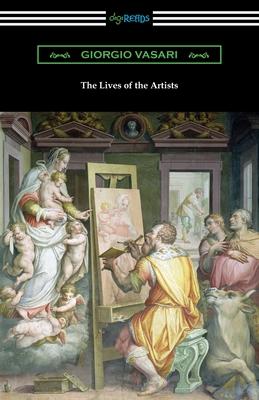Giorgio Vasari's biographical collection "The Lives of the Artists" is one of the most frequently cited art history books since the 16th century. It is also the first comprehensive book on art history ever created. In the work, Vasari brings together facts, knowledge, and sometimes gossip about almost 200 Renaissance artists. Most of the biographies are focused on Florentines and Romans, though Vasari also wrote about other European artists. "The Lives of Artists" not only discusses the importance of the artists, but it also serves as a book of art criticism. Vasari looked at the artists' paintings in minute detail, describing the positive and negative aspects of the artistry as well as the quality of the work. "The Lives of the Artists" has not escaped criticism, though. Many scholars and historians realize that Vasari's information was not always completely accurate; with the lesser-known artists, he flubs dates and other minor information. Vasari also sometimes invented some information and gossip about the artists. However, many have argued that the false information, or gossip, is truthful in spirit, even if the actual events did not happen. Regardless, "The Lives of Artists" is still one of the best art criticism and art history books in the genre, and it provides a valuable look at how the leading artists of the Renaissance helped to shape and redefine the art of their time. Contained here is a selection of thirty-three of the most important biographies from Vasari's expansive work is a single volume which follows the translation of Gaston du. C. de Vere and is printed on premium acid-free paper.

Giorgio Vasari's biographical collection "The Lives of the Artists" is one of the most frequently cited art history books since the 16th century. It is also the first comprehensive book on art history ever created. In the work, Vasari brings together facts, knowledge, and sometimes gossip about almost 200 Renaissance artists. Most of the biographies are focused on Florentines and Romans, though Vasari also wrote about other European artists. "The Lives of Artists" not only discusses the importance of the artists, but it also serves as a book of art criticism. Vasari looked at the artists' paintings in minute detail, describing the positive and negative aspects of the artistry as well as the quality of the work. "The Lives of the Artists" has not escaped criticism, though. Many scholars and historians realize that Vasari's information was not always completely accurate; with the lesser-known artists, he flubs dates and other minor information. Vasari also sometimes invented some information and gossip about the artists. However, many have argued that the false information, or gossip, is truthful in spirit, even if the actual events did not happen. Regardless, "The Lives of Artists" is still one of the best art criticism and art history books in the genre, and it provides a valuable look at how the leading artists of the Renaissance helped to shape and redefine the art of their time. Contained here is a selection of thirty-three of the most important biographies from Vasari's expansive work is a single volume which follows the translation of Gaston du. C. de Vere and is printed on premium acid-free paper.